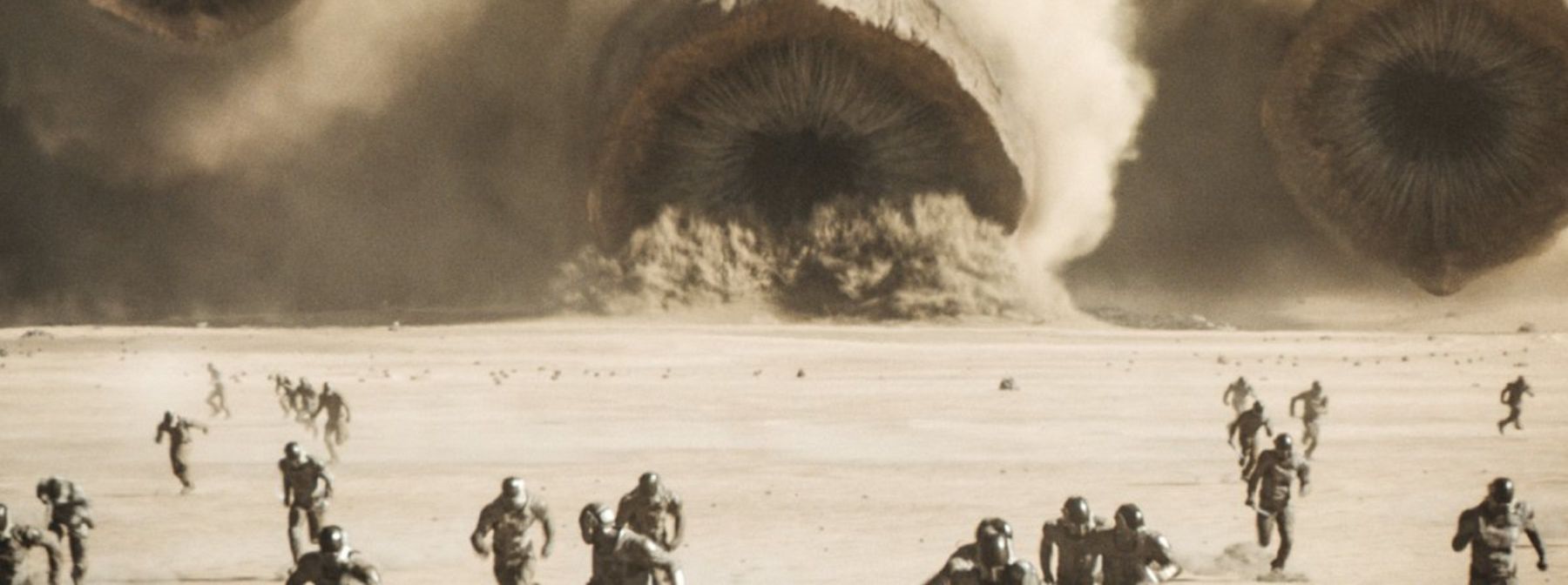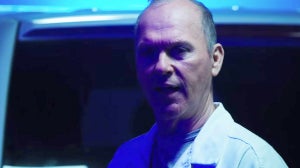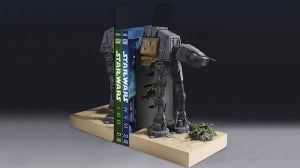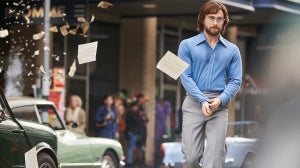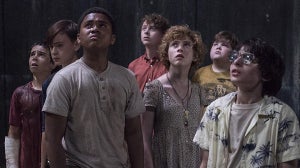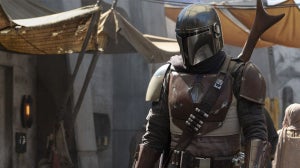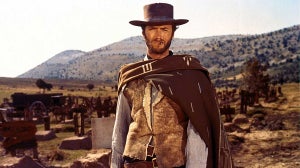
The black-and-white gladiatorial showdown at the Harkonnen arena was brought to life using a modified Alexa camera, with an additional sensor to record infrared light, one of the earliest creative decisions made by director Denis Villeneuve and cinematographer Greig Fraser. As Fraser explained to us; “The cameras saw no visible light whatsoever – we were able to see the actors and the sets in a way that we’d never have been able to otherwise.”
It was the perfect way to bring to life the Harkonnen base on the planet of Giedi Prime, where the Black Sun has sucked all colour out of the atmosphere. But as soon as these sequences were preparing to film, disaster struck.
“I was on the studio lot with Greig, looking at the costumes through his monitor – and lots of these black fabrics we’d created for the Harkonnens had come out as white because of the cameras”, Costume Designer Jacqueline West recounted to Zavvi. “We had to go back to the drawing board, and remake most of the costumes in a short timeframe so they’d register as black in infrared.”
“We’re not scientists, so we never expected this to happen”, laughed Production Designer Patrice Vermette. “I still have no idea why those cameras were showing all of the actors’ tattoos, that we’d spent a lot of time covering with makeup!”
Creating Giedi Prime
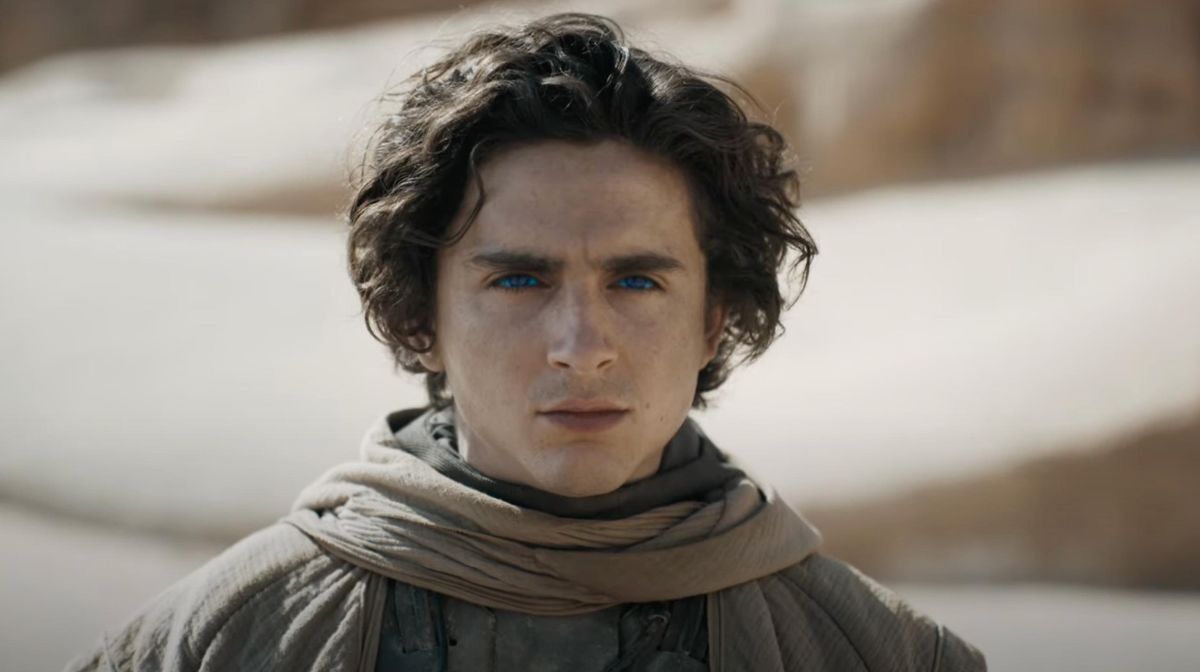
The first movie gave us a glimpse of Giedi Prime, but fleshing it out further was what Vermette was most excited by this time around. All he knew going in was that it had to look deeply unpleasant to the eye, but a more specific inspiration didn’t strike until the moment he least expected.
“I was driving about an hour and a half outside of Montreal in the countryside, and I saw a field filled with septic tanks. Denis had always described the planet as black, looking almost moulded by plastic, and seeing that field I had the sudden epiphany that this is what it needed to look like.
“I jumped out of my car and started taking reference pictures. A lot of the earliest stages of production were me and the concept artists analysing these septic tanks right down to the specific curves, and how a world could come to be when built out from that.”
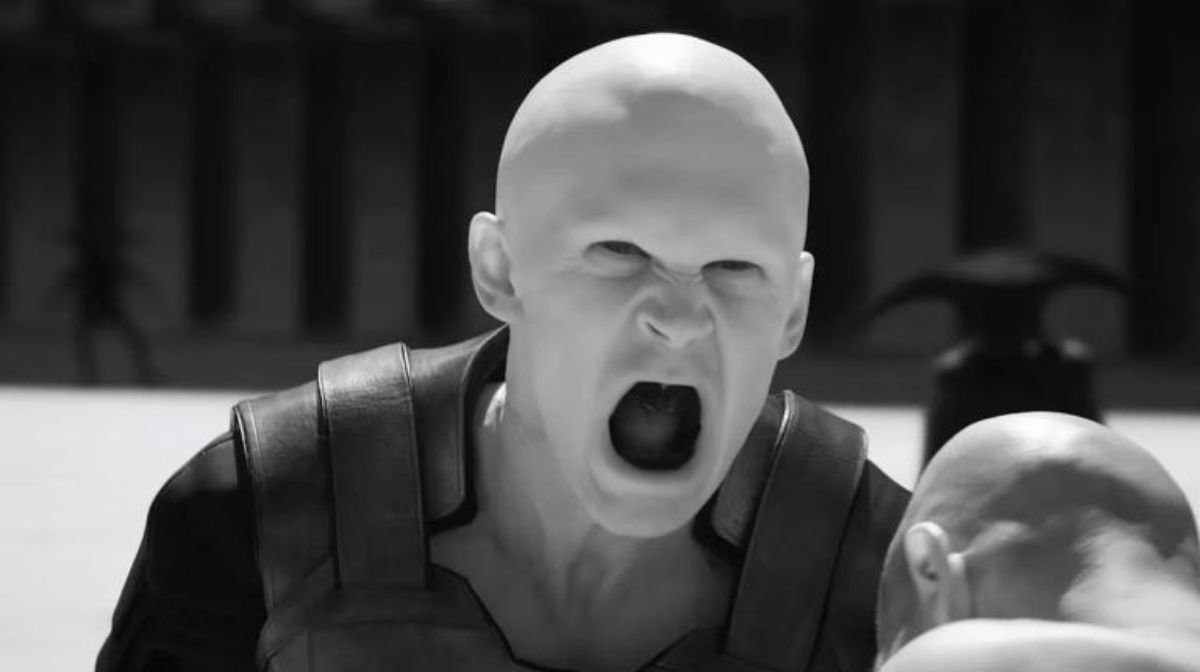
It should be a world devoid of any style whatsoever, but West wanted to incorporate a gothic aesthetic to the costumes, with Austin Butler’s Feyd Rautha being the towering, swaggering rockstar at the centre of this drab world.
“He’s a sadistic sociopath, but it was important that he wasn’t one dimensional – he needed a rockstar flair”, West continued. “So my inspiration was Mick Jagger, and a good friend of mine, Marsia Trinder, was one of the designers who made his clothes in New York back in the sixties and seventies.
“She would always make sure his clothes physically moved on him, to give him a flair; if you gave him a long jacket, for example, she’d make sure it would have a slit in the back with tails. I approached dressing Austin in the same way that she told me about how she dressed Jagger, making him immediately larger than life through his outfits.”

Further texture was added during the editing process, with York-born editor Joe Walker’s main challenge being finding a distinctive “rhythm” to the Gladiatorial showdown.
“From day one, an editor’s job is constructing rhythm out of what every different group is sending you, from sound departments on location and at home, to the various units filming”, he explained to us. “But with the gladiatorial scene, Denis wanted to make sure it never felt like a 21st century sports event, it needed to have a unique sound, and the crowd couldn’t just clap.
“I wanted to bake that into the flow of the cut itself, and we were working closely with a team based in a dubbing theatre in New Zealand, who were recording hundreds of people doing Māori Haka chants, and other teams who were recording heavy rockers raging and rocking down the mic. As an editor, you have to marry all these disparate things and build a cohesive rhythm out of them, bringing to life what has existed purely in the imaginations of Denis and Patrice for many months beforehand.
“I have a background in music, and the big thing I love about editing is that it’s a similar artform, where you have to map out something against specific time constraints. You have to be aware of the detail, and find where is best to pick up momentum by creating the big tectonic plates in the structure of a scene; sometimes, that’s just a line reading or an eyebrow being lifted, but it’s all in aid of helping the whole story click into place.”
Desert Power

The bulk of Dune: Part Two is spent in the deserts of Southern Arakis, where you’ll find much different climates – but equally harsh weather conditions! - to the first film.
West continued: “The Fremen are a composite of several desert tribes I researched, I didn’t want to follow any single culture too closely. In a Darwinian, survival of the fittest sense, the Fremen are the ones who have managed to survive out here, so the main focus was on making sure all of their clothes were practical, first and foremost.
“Like (Dune author) Frank Herbert, we took a lot of inspiration from Lawrence Of Arabia, and specifically how the British always had their suits made out of linen when they travelled to the tropics, as it makes you 10 degrees cooler when you wear it. I wanted every costume to be made with the knowledge that it was for a character who was savvy enough to know how to survive in this harsh desert, whilst also making sure it had a distinct period look that would become classic for this movie.”
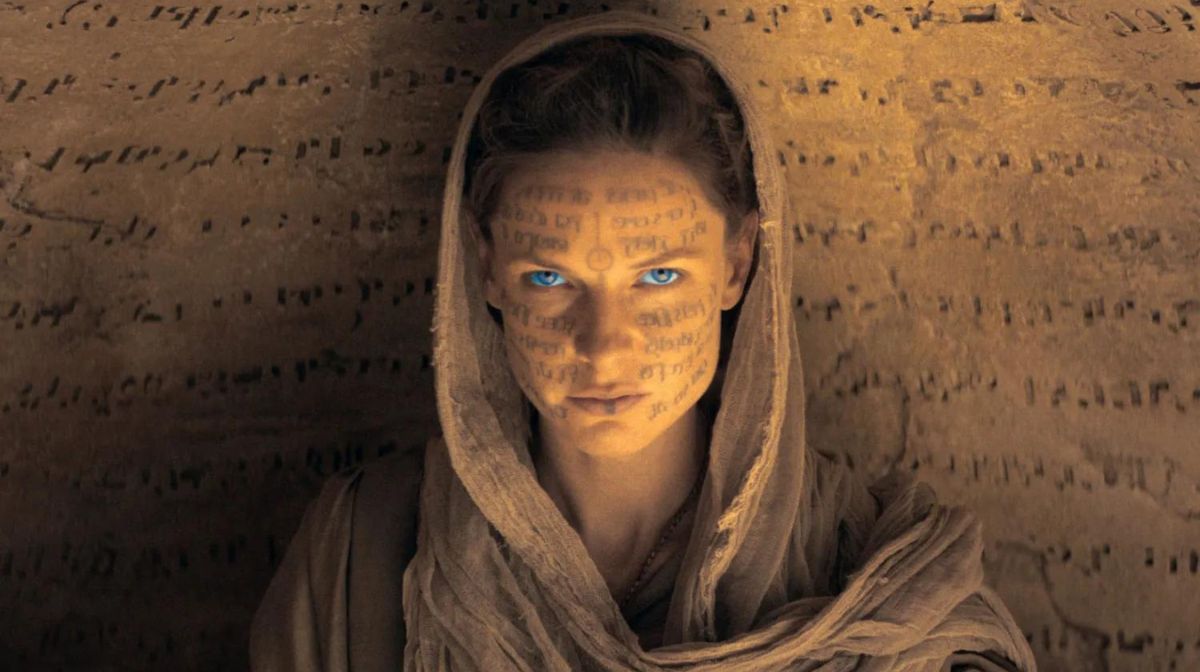
Keenly aware that audiences will want to explore more of this world, the team returned to work with the challenge of making sure each desert had its own distinct look - a challenge considering, well, there’s only so many ways you can shoot sandy landscapes.
Vermette explained: “We returned to Jordan to shoot, as we knew we needed to be there for the rock formations that surround Arakis. But we needed new locations, as it was crucial for Denis that audiences wouldn’t get a sense of repetitiveness, and that the southern hemisphere of the planet would stand distinct from what we’ve previously seen.
“As well as Jordan, we shot a lot in Abu Dhabi, never repeating any locations. The eclipse scene in the beginning of the movie was the most ambitious for this; that one sequence was shot in 12 locations split between Jordan and Abu Dhabi, and at first, we found a location I thought was perfect for the whole thing, but then looking at the storyboards, Greig realised it didn’t work for all the shots.
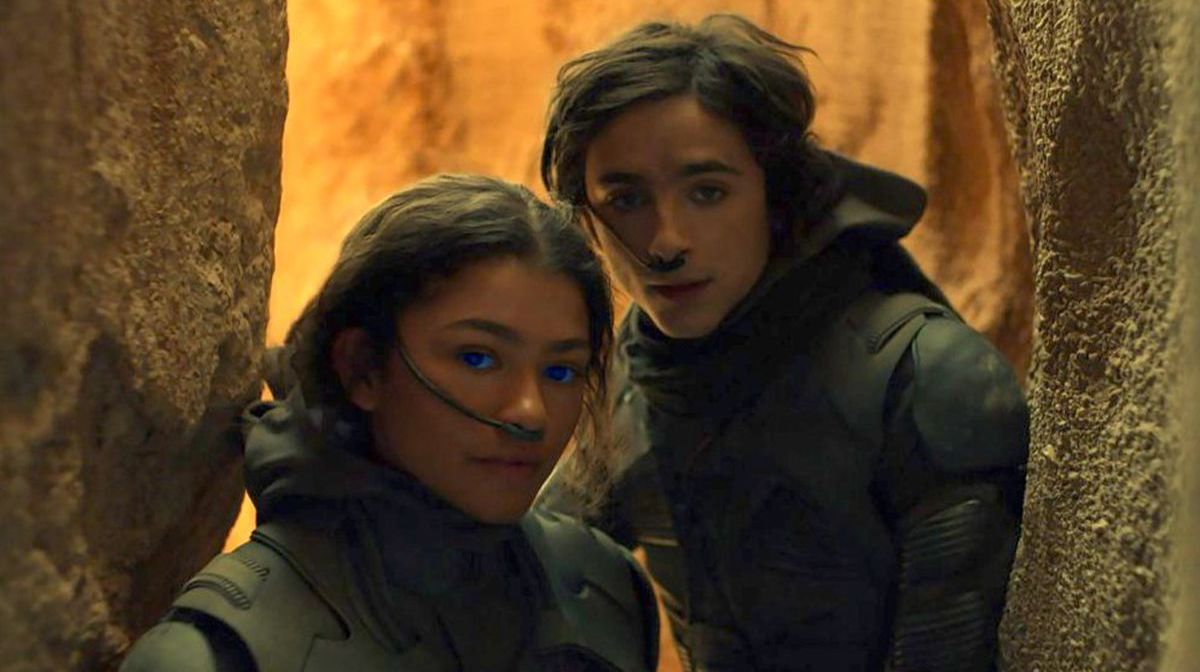
“It’s still crazy that this we ended up shooting one sequence in 11 additional places, but it’s magical that it works as well as it does.”
Making sure the team took advantage of these beautiful locations at their very best, Fraser ensured as many scenes as possible were shot during magic hour, the periods just after sunrise or just before sunset when the sky is at its reddest. All of the scenes with just Paul (Timothée Chalamet) and Chani (Zendaya) were shot at this time of the day, with the team working around the clock to identify which scenes would be elevated by this backdrop.
He said: “You put yourself into a block of 15 minutes before sunset to sunset which you’d work around. Waking up early, we’d shoot a big action scene such as the harvester battle until the middle of the day, when a small unit would get in pickup trucks, drive up a hill, and find the best spots to put the cast in.
“When you have a location like this, you want to make use of everything that it can give you, and when there’s such harsh, hot sun in the middle of the day, you start thinking about the best ways to utilise the beautiful sunset light. It makes for long days, but it’s the only job where the crew were eager to get up early, they didn’t want to miss the sunrise!”
Riding the Worm

Staging the worm riding sequence itself is one thing, but the biggest consideration that needed to be taken might surprise you: the armour that Paul is seen wearing as he straddles the sandy monster.
“When we were shooting the tests in Budapest, it became obvious the actors would be blasted with sand – you can’t CGI that in, you have to really blast them!” West added. “So we needed something pitted to go over the armour that would protect the actors getting it stuck in their suits.
“We had an extra layer built in a workshop in the middle of the Danube just outside of Budapest. Almost every day, I’d be going back to check on that on costume; it was a lot of trial and error finding something that could both cover a thick suit, but also look believable as protection the worm riders would wear.”
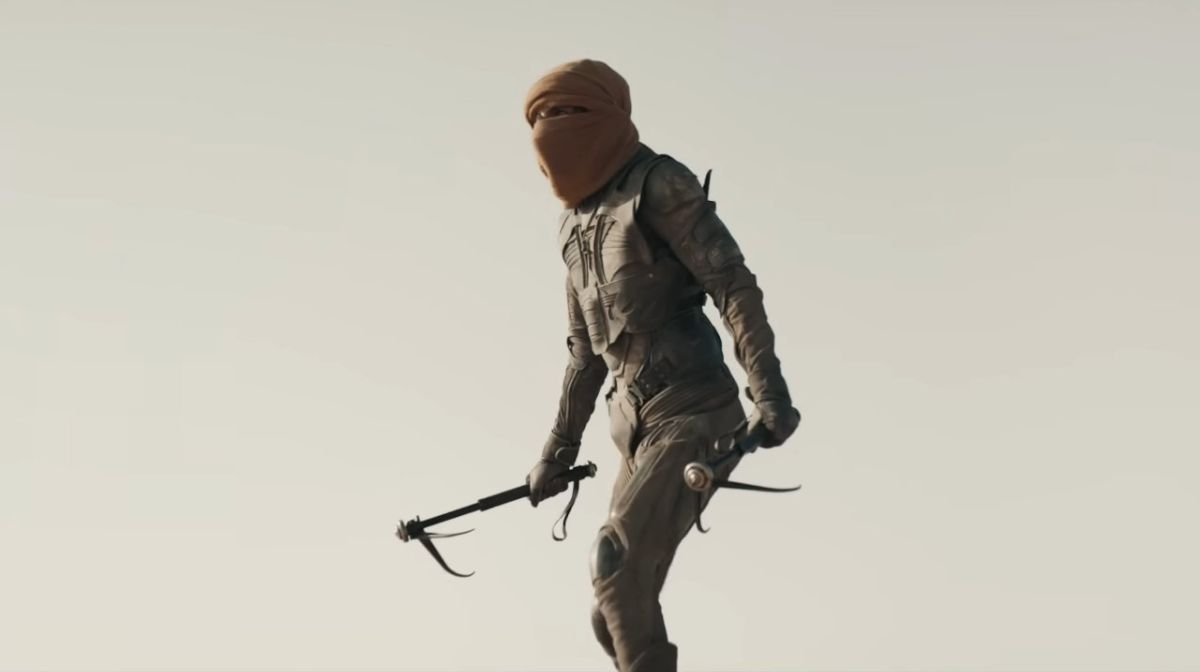
Dune: Part Two was shot in a post pandemic world, where more filmmakers have been using The Volume – in which large LED screens are placed on real locations, affording filmmakers and filmmakers the chance to better visualise special effects while shooting – to overcome filming restrictions. As the cinematographer for Rogue One and several episodes of The Mandalorian, Fraser was one of the first pioneers of this technology, and that’s why he knew that everything in this movie had to be done for real.
He continued: “The Volume exploded after COVID because it stopped a lot of actors from needing to get on airplanes, but thankfully, we were in a place where we’d already set a precedent for how this franchise should look. That meant physically being in the desert, as anything less than that would be visually appropriate for this film – it doesn’t necessarily mean that this will be the only way a Dune movie will ever look, but it’s not the right tool for this job.
“Plus, from a production standpoint, you either have to build a volume or physically travel to one. That’s a lot of pain, and you’d almost have to add more scenes that need it to make it worthwhile – and when you’re in the beautiful desert already, well, you don’t need that extra hassle!”
How does Dune: Part Two look in 4K?
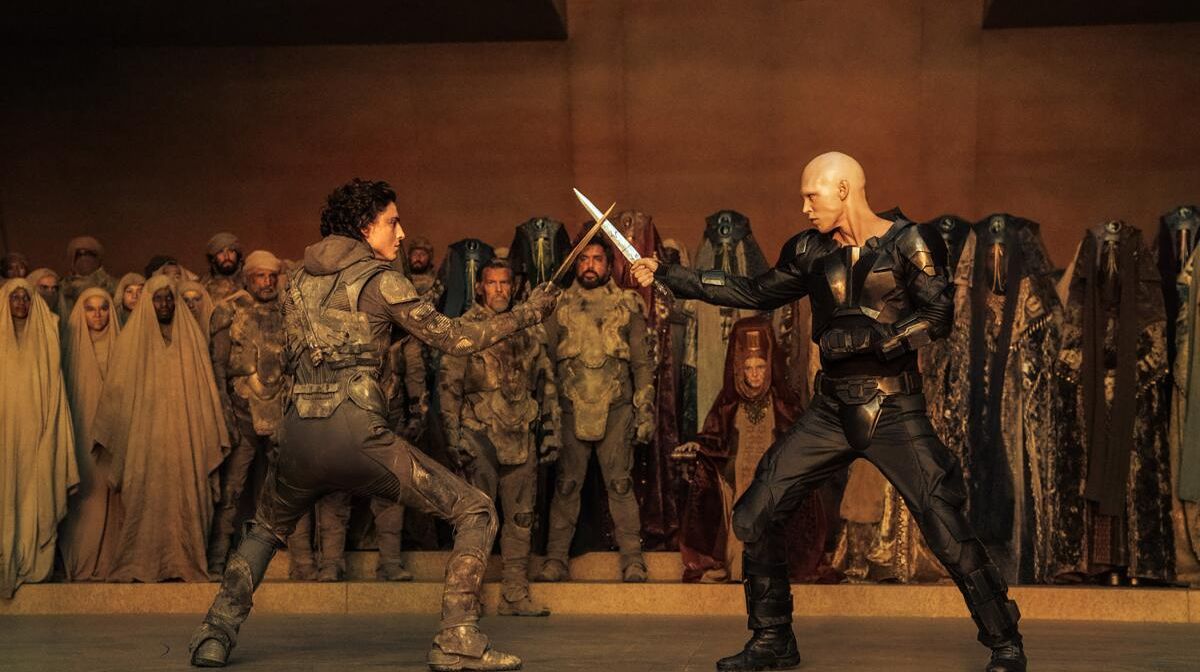
As this feature is to promote the release of Dune: Part Two on 4K, naturally, the big question is whether it will look quite as epic on the small screen - and the big thing to note is that, although it was released in IMAX, it wasn’t shot with IMAX cameras, and will not be released in the IMAX Enhanced aspect ratio for home viewing.
As Fraser explains: “Warner Bros. gave us carte blanche to shoot this movie in the way we needed to, and with Part One, we tested IMAX 70mm – and it just didn’t feel like the right format for this movie, compared to digital cameras, which me and Denis felt were a more appropriate method for telling this story.
“When it was post-converted to IMAX 70mm for the theatrical release, it changed the look and gave it a lovely analogue aesthetic, but it also wasn’t quite as precise visually; the colours in some shots didn’t match up quite as well, for example. And in this movie, no detail was accidental, it was very deliberate in how we dreamed it up, and we want people to see that.”

